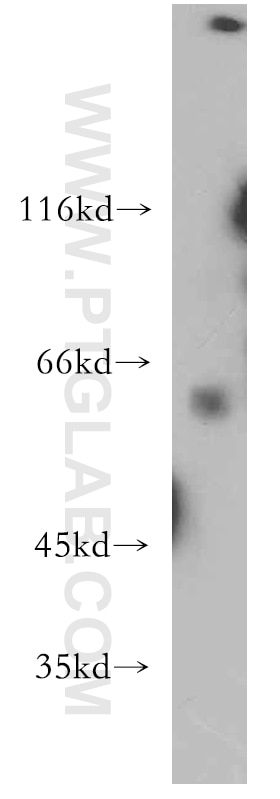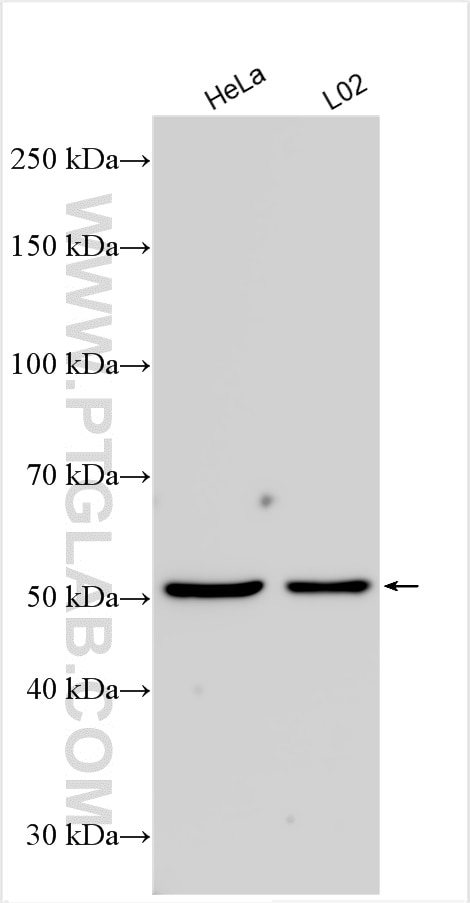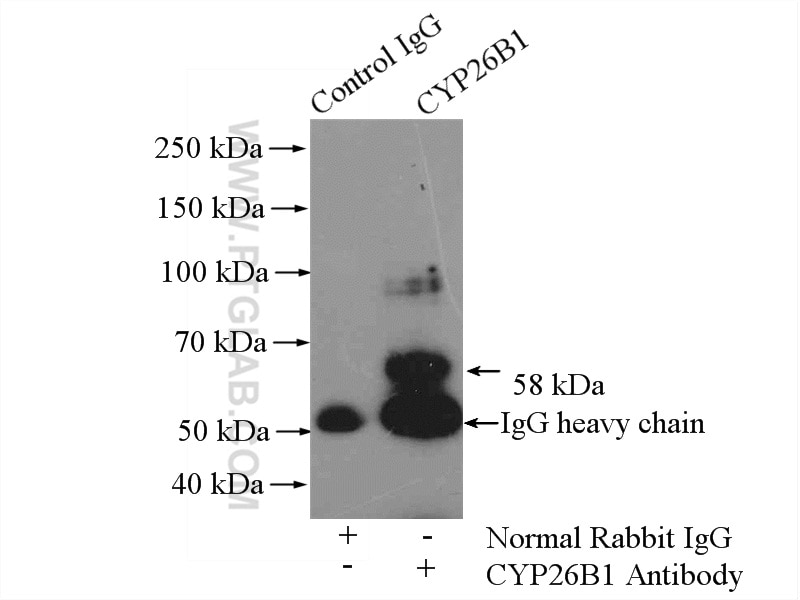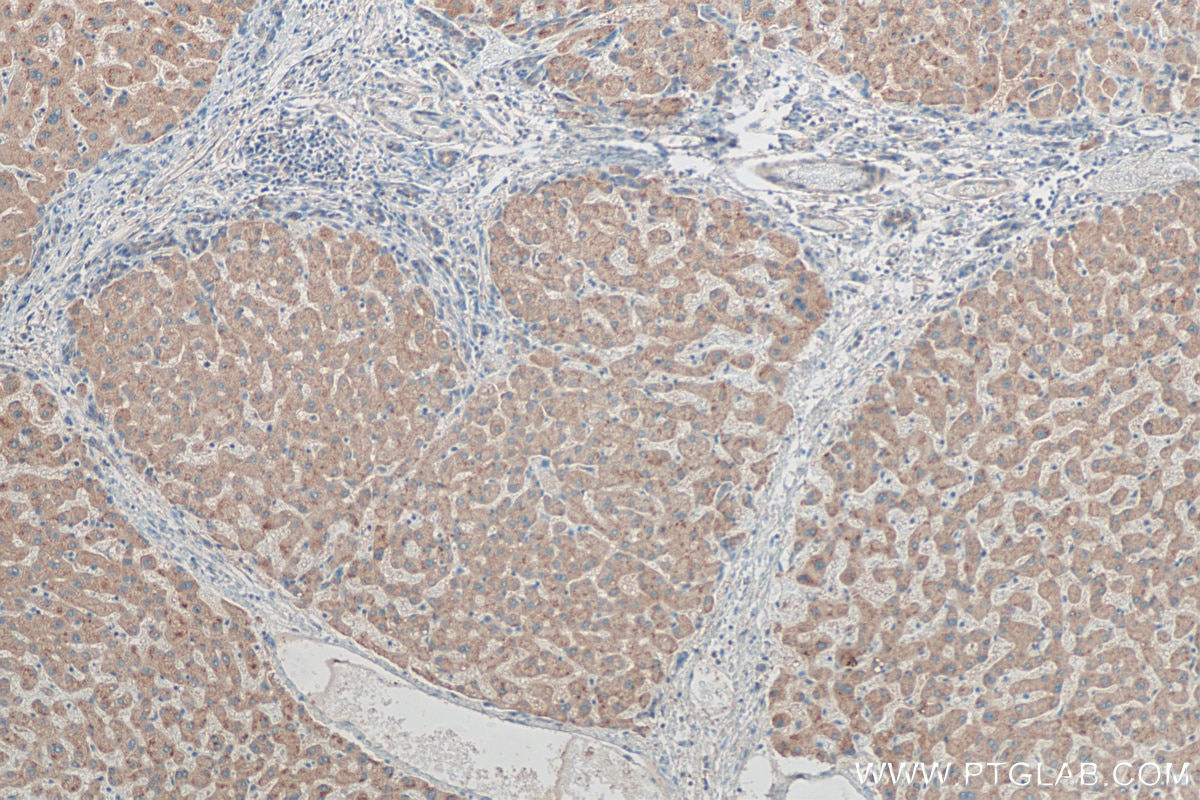- Phare
- Validé par KD/KO
Anticorps Polyclonal de lapin anti-CYP26B1
CYP26B1 Polyclonal Antibody for WB, IHC, IF/ICC, IP, ELISA
Hôte / Isotype
Lapin / IgG
Réactivité testée
Humain, rat, souris
Applications
WB, IHC, IF/ICC, IP, ELISA
Conjugaison
Non conjugué
N° de cat : 21555-1-AP
Synonymes
Galerie de données de validation
Applications testées
| Résultats positifs en WB | cellules HeLa, cellules L02, tissu cérébral humain |
| Résultats positifs en IP | cellules L02 |
| Résultats positifs en IHC | tissu de cirrhose hépatique humain, tissu cardiaque humain il est suggéré de démasquer l'antigène avec un tampon de TE buffer pH 9.0; (*) À défaut, 'le démasquage de l'antigène peut être 'effectué avec un tampon citrate pH 6,0. |
| Résultats positifs en IF/ICC | cellules HepG2, |
Dilution recommandée
| Application | Dilution |
|---|---|
| Western Blot (WB) | WB : 1:1000-1:4000 |
| Immunoprécipitation (IP) | IP : 0.5-4.0 ug for 1.0-3.0 mg of total protein lysate |
| Immunohistochimie (IHC) | IHC : 1:50-1:500 |
| Immunofluorescence (IF)/ICC | IF/ICC : 1:50-1:500 |
| It is recommended that this reagent should be titrated in each testing system to obtain optimal results. | |
| Sample-dependent, check data in validation data gallery | |
Applications publiées
| KD/KO | See 1 publications below |
| WB | See 11 publications below |
| IHC | See 9 publications below |
| IF | See 3 publications below |
Informations sur le produit
21555-1-AP cible CYP26B1 dans les applications de WB, IHC, IF/ICC, IP, ELISA et montre une réactivité avec des échantillons Humain, rat, souris
| Réactivité | Humain, rat, souris |
| Réactivité citée | rat, Humain, souris |
| Hôte / Isotype | Lapin / IgG |
| Clonalité | Polyclonal |
| Type | Anticorps |
| Immunogène | CYP26B1 Protéine recombinante Ag15368 |
| Nom complet | cytochrome P450, family 26, subfamily B, polypeptide 1 |
| Masse moléculaire calculée | 512 aa, 58 kDa |
| Poids moléculaire observé | 49-58 kDa |
| Numéro d’acquisition GenBank | BC069443 |
| Symbole du gène | CYP26B1 |
| Identification du gène (NCBI) | 56603 |
| Conjugaison | Non conjugué |
| Forme | Liquide |
| Méthode de purification | Purification par affinité contre l'antigène |
| Tampon de stockage | PBS with 0.02% sodium azide and 50% glycerol |
| Conditions de stockage | Stocker à -20°C. Stable pendant un an après l'expédition. L'aliquotage n'est pas nécessaire pour le stockage à -20oC Les 20ul contiennent 0,1% de BSA. |
Informations générales
CYP26B1(Cytochrome P450 26B1) is involved in the metabolism of retinoic acid (RA), rendering this classical morphogen inactive through oxidation.It has 3 isoforms produced by alternative splicing.Cyp26b1 deficiency induces pronounced apoptosis in the developing limb and delayed chondrocyte maturation(PMID:15030763).Defects in CYP26B1 are the cause of radiohumeral fusions with other skeletal and craniofacial anomalies (RHFCA).
Protocole
| Product Specific Protocols | |
|---|---|
| WB protocol for CYP26B1 antibody 21555-1-AP | Download protocol |
| IHC protocol for CYP26B1 antibody 21555-1-AP | Download protocol |
| IF protocol for CYP26B1 antibody 21555-1-AP | Download protocol |
| IP protocol for CYP26B1 antibody 21555-1-AP | Download protocol |
| Standard Protocols | |
|---|---|
| Click here to view our Standard Protocols |
Publications
| Species | Application | Title |
|---|---|---|
Nat Genet Exome-wide analyses identify low-frequency variant in CYP26B1 and additional coding variants associated with esophageal squamous cell carcinoma.
| ||
Brain Struct Funct Activity-dependent and graded BACE1 expression in the olfactory epithelium is mediated by the retinoic acid metabolizing enzyme CYP26B1. | ||
J Neurosci The Stimulus-Dependent Gradient of Cyp26B1+ Olfactory Sensory Neurons Is Necessary for the Functional Integrity of the Olfactory Sensory Map. | ||
J Neurosci Increased Retinoic Acid Catabolism in Olfactory Sensory Neurons Activates Dormant Tissue-Specific Stem Cells and Accelerates Age-Related Metaplasia. | ||
Front Mol Neurosci Transcriptomics of Environmental Enrichment Reveals a Role for Retinoic Acid Signaling in Addiction. | ||
Avis
The reviews below have been submitted by verified Proteintech customers who received an incentive for providing their feedback.
FH Daniel (Verified Customer) (02-06-2020) | The antibody stains a subset of proximal tubulues.
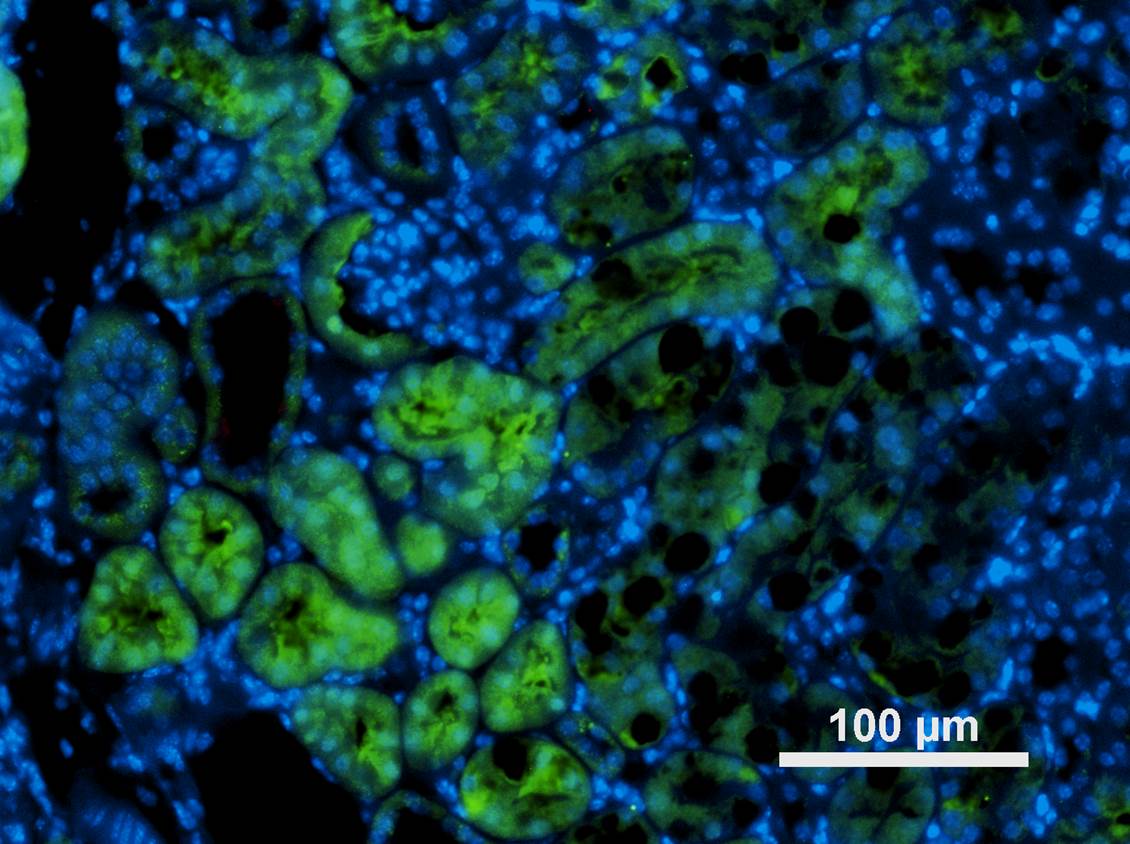 |
